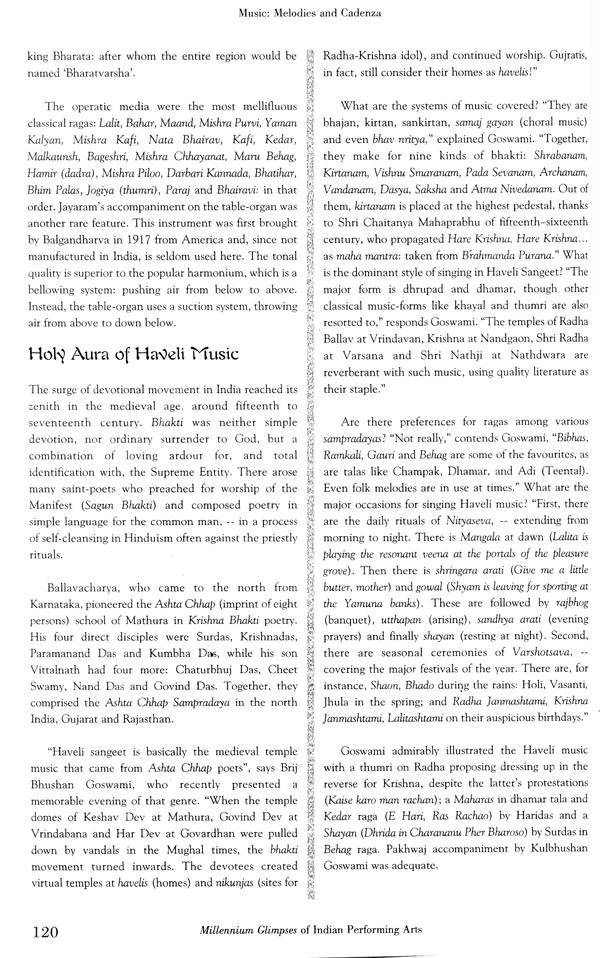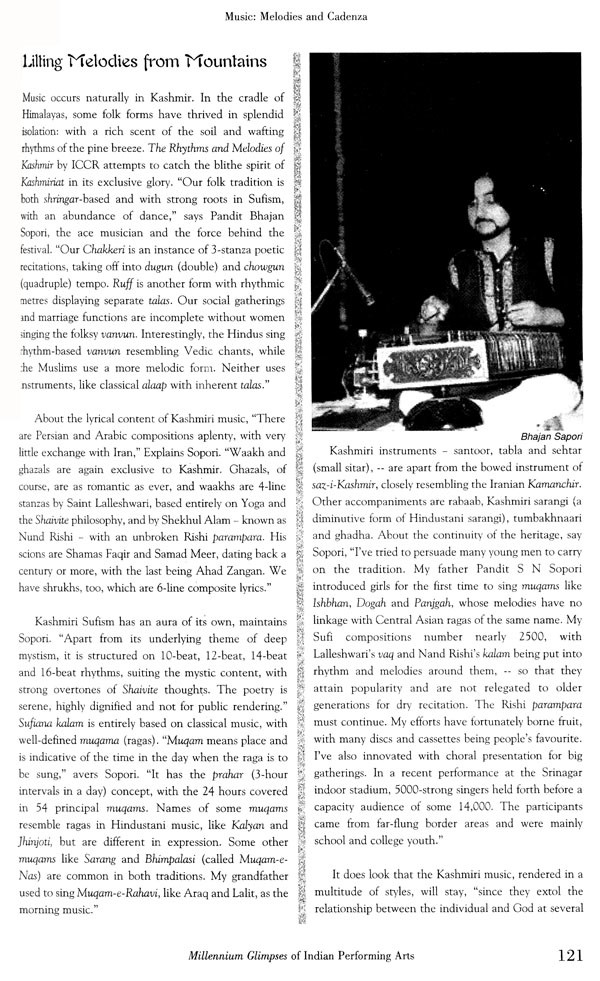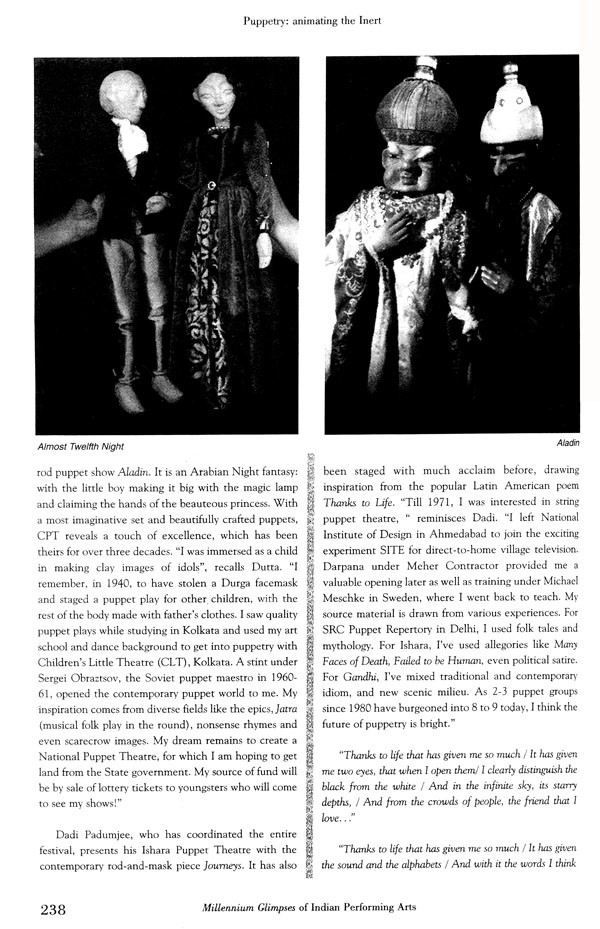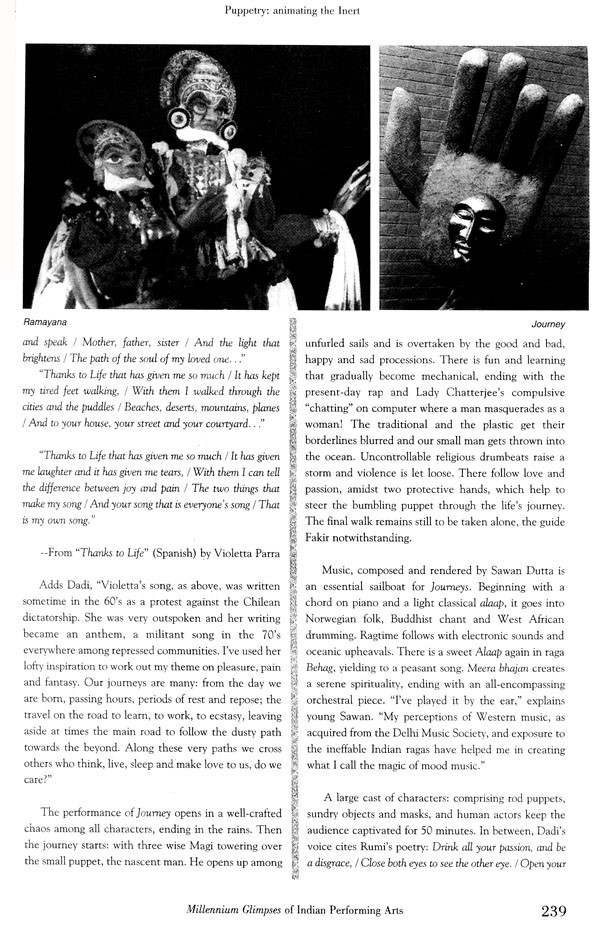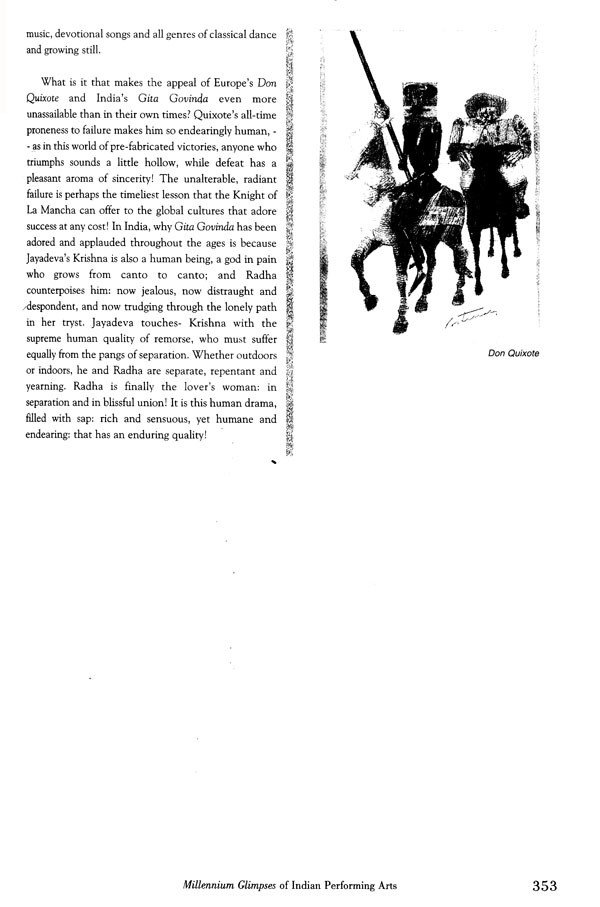
Millennium Glimpses of Indian Performing Arts
Book Specification
| Item Code: | UBE985 |
| Author: | Utpal K. Banerjee |
| Publisher: | Shubhi Publications, Gurgaon |
| Language: | English |
| Edition: | 2018 |
| ISBN: | 9788182900196 |
| Pages: | 354 (Throughout B/w Illustrations) |
| Cover: | HARDCOVER |
| Other Details | 12.00 X 9.00 inch |
| Weight | 1.57 kg |
Book Description
A 'chronicler, almost like an historian, never rests! The new millennium has dawned meanwhile and there is a new restlessness of creativity around.
Two points have all along been kept in mind. One, the 'chronicling should do some justice to the variegated background of the arts and the artist. Two, it is equally important to delve into the minds of the dancer- choreographers, singer-composers and directors, and obtain their view- points about their creative outputs and desist from passing sweeping overviews, as may be discrete.
Indian Performing Arts was my first book in 1992 covering substantially the area for the 1970, and 1980s. With an encouraging Foreword by the scholar-aesthete Dr. Kapila Vatryayan and delightful sketches by the master-artist RK Laxman, the book (from Vikas Publishing House) was surprisingly well received - especially abroad - and went through multiple till the copies got exhausted. It was time to cover the scene in the 1990's and Indian performing Arts: A Monic has been an entirely new book in that direction: out in early 2006 (from Harman Publishing House) which has been already snapped up by the market.
A chronicler, almost like an historian, never rests! The new millennium has dawned meanwhile and there is a new restlessness of creativity around and, for a change, I asked some like-minded critics and practitioners: with substantial prowess as well as passion in their given fields to introduce their subjects. I am beholden to Leela Venkataraman to do so in dance; Meeta Pandit in music; Ram Gopal Bajaj in theatre; Shantanu Ganguly in Cinema; and Sampa Ghosh in puppetry: offering their own 'millennium insights and thereby enriching the volume.
Additionally, I have thought it fit to include profiles (or interviews) of some millennium personalities with brilliant intellects and carry on looking at some interwoven, twilight domains of art and culture, calling them a 'miscellany. Two points have all along been kept in mind. One, the 'chronicling' should do some justice to the variegated background of the arts and the artists. Two, it is equally important to delve into the minds of the dancer-choreographers, singer- and directors, and obtain their view-points about their creative outputs and desist from passing sweeping overviews, as may be discrete.
Like all 'chroniclers', I have sorted and sieved my material, and striven to be illustrative: rather than exhaustive. As the title suggests, they are meant to be 'glimpses' - textually as well as visually - and should serve to whet the appetite of the common man: as an art-lover and art-enthusiast to pick up a general background and then go to the scholarly tome.
I am happy to have received unstinted love and affection of the artists and art lovers whom I have interacted with, in writing this book. I am beholden to them, for providing me with photos from their personal collection. I am particularly thankful to Sampa Ghosh for supporting me with every possible help in preparing the manuscript.
During the eventful journey from temple and court to proscenium, Indian classical dance has successfully negotiated between extremes, even when made to stand on its head. Recognition of dance as a source for human culture and also as a cultural perception of Self. representing the world view of a people, has in the challenges of finding legitimacy, opportunities and patronage in changed contexts, put its received legacy of idealistic principles to severe test. Dance as a preserve of traditional families, barring rare instances, is disappearing. More significantly in recent years, the vital link between art and patron, who in the past as connoisseur also shaped the art form defining its aesthetic frontiers, has snapped. Today's sponsor/patron is no specialist and between his unknowing populist demands and those of the art connoisseur, the classical dancer treads a delicate path.
In the global context, dance as a player on the international stage, has long lost its cocooned privacy of being confined to its home. The Columbia University in Chicago in 2001 mounted an international Colloquium on Bharatanatyam in the Diaspora as a measure of how far our dances have traveled. Odissi, reinvented only in the late 1950's till which time it was unknown beyond its home of Orissa, was the focus of a massive three-day event combining seminar and workshops with performances, at Washington a couple of years ago! South Africa, till only the other day crushed under Apartheid and racism, today offers Indian dance as a Matriculation subject at the secondary school level. Bharatanatyam schools are mushrooming in Cape Town where Kathak and Kuchipudi are also well known. GIDA, an umbrella body of Indian dancers in Johannesburg, promotes not just Indian dance practice but also research. American universities have introduced Indian dance faculties, and in London, Bharatanatyam and Kathak have found significant space on the art scene.
**Contents and Sample Pages**






